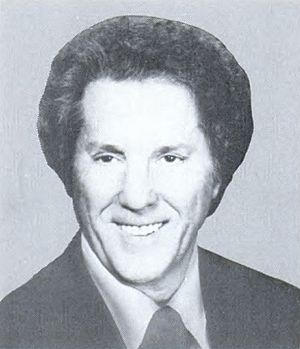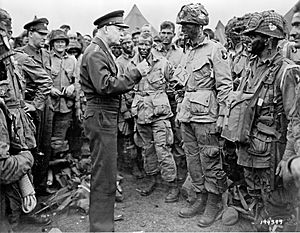Kenneth J. Gray facts for kids
Quick facts for kids
Kenneth J. Gray
|
|
|---|---|
 |
|
| Member of the U.S. House of Representatives from Illinois |
|
| In office January 3, 1985 – January 3, 1989 |
|
| Preceded by | Paul Simon |
| Succeeded by | Glenn Poshard |
| Constituency | 22nd District (1985-1989) |
| In office January 3, 1955 – December 31, 1974 |
|
| Preceded by | C. W. Bishop |
| Succeeded by | Paul Simon |
| Constituency | 25th District (1955-1963) 21st District (1963-1973) 24th District (1973-1974) |
| Personal details | |
| Born | November 14, 1924 West Frankfort, Illinois |
| Died | July 12, 2014 (aged 89) Herrin, Illinois |
| Political party | Democratic |
| Spouses | Gwendolyn June Croslin (1927-1995) Margaret "Toedy" Holley-Gray |
| Children | 3 |
Kenneth James Gray (born November 14, 1924 – died July 12, 2014) was an American businessman and politician. He was a brave soldier in World War II. Later, he served as a representative for Illinois in the United States House of Representatives. He held this important job from 1955 to 1974, and again from 1985 to 1989.
Contents
Early Life and First Jobs
Kenneth Gray was born in West Frankfort, Illinois. He went to elementary school and graduated from Frankfort Community High School. When he was just 13, Ken started his own business. It was a roller rink called Gray's Roller Rink. He did almost everything there himself! He was the floor manager, the cashier, and even the janitor.
At 16, he became an auctioneer, which means he sold things by calling out bids. By 18, he owned a car dealership called Gray Motors. He ran this business until 1954.
Serving in World War II
In January 1943, Ken Gray joined the United States Army Air Forces during World War II. He worked as an aircraft crew chief. This meant he was in charge of making sure airplanes were ready to fly. He served in places like North Africa, Italy, and Southern France. He reached the rank of first sergeant before leaving the army in December 1945.
A book about Gray says he was at an air base in June 1944. He was assigned to drive General Dwight D. Eisenhower. This was right before a big event called the assault on Normandy. The book also says Gray might be in a famous photo of Eisenhower talking to soldiers.
Gray received awards for his service, including the European-African-Middle Eastern Campaign Medal. He also got the World War II Victory Medal.
After the War and Community Work
After World War II, Gray was very active in his community. He joined the American Legion, a group for veterans. He also became Vice President of the Illinois Jaycees. These experiences helped him meet many people and become well-known. This was useful when he decided to run for Congress.
Gray also learned to fly airplanes and helicopters. He even ran an air service in Benton, Illinois, from 1948 to 1952.
In 1953, Gray helped start the Walking Dog Foundation for the Blind. This charity provided guide dogs to people who could not see well.
Becoming a Congressman
In 1954, Gray ran for the U.S. House of Representatives and won! He was reelected nine times. He served from January 3, 1955, until he resigned on December 31, 1974.
In Congress, Gray became known for his unique style. He often wore bright suits, white sport coats, and colorful bow ties. He even had permed hair that was sometimes blonde or red!
Gray was a big supporter of turning Washington, D.C.'s Union Station into a National Visitor Center. This center was meant for the United States Bicentennial in 1976. It later became a train station and shopping area again.
He was also famous for getting money for projects in his home district. He helped approve projects like highways, dams, and housing. He was sometimes called the "Prince of Pork." This nickname meant he brought a lot of government money back to his area. But Gray said these projects, like the dam that created Rend Lake, saved a lot of money by preventing floods. He famously said, "If that is pork, pass me the plate, because I'll take another heaping serving."
Magician and TV Appearances
Kenneth Gray was also an amateur magician! He performed magic shows for groups and kids in his district. In one speech about highways, he made white roses bloom from bare stems. This surprised everyone and earned him a big cheer!
He even performed a levitation trick with two senators. In 1959, Gray appeared on the TV game show To Tell the Truth. He also appeared on I've Got a Secret in 1966. On both shows, he stumped some of the panelists with his secret: being a member of Congress, an auctioneer, and a magician!
Gray lived on a houseboat while he was in Congress. He decided not to run for reelection in 1974. After leaving Congress, he opened Ken Gray's Antique Car Museum.
Return to Congress
In 1984, Gray ran for the U.S. House again and won! He served two more terms, from January 3, 1985, to January 3, 1989. During this time, he was praised for his knowledge of how Congress worked. He often led meetings in the House, using his auctioneer skills to keep things fair.
Gray decided not to run for reelection in 1988 because of a muscle problem. This problem was caused by a tick bite he got during a trip to Brazil.
Retirement and Passing
After retiring, Gray lived in West Frankfort. He opened a museum to show off his political items and souvenirs. In 1999, he had a stroke, which affected his speech and one side of his body.
Kenneth Gray passed away on July 12, 2014, at the age of 89. He was buried in West Frankfort.
Family Life
During World War II, Kenneth Gray married Gwendolyn June Croslin. They had three children: Diann, Becky, and James. His son James passed away before him. Gwendolyn Gray died in 1995. Gray's second wife was Margaret "Toedy" Holley-Gray, who survived him.
Legacy and Honors
Kenneth Gray has been honored in several ways:
- The United States courthouse and post office in Benton, Illinois, is named the Kenneth Gray Federal Building.
- In 2008, the post office in West Frankfort was named after him.
- Also in 2008, a part of Interstate 57 was named the "Ken Gray Expressway."
- The Ken Gray Scholarship was created at John A. Logan College in 2008. It helps students from Franklin County who plan to attend Southern Illinois University.
A book about Gray, called Pass the Plate: The Legend & Legacy of United States Congressman Kenneth J. Gray, was published in 2009.
In 2016, Gray's wife closed his museum. She gave his collection of items to Morthland College. However, the college closed in 2018, and the collection's location is now unknown.
|


